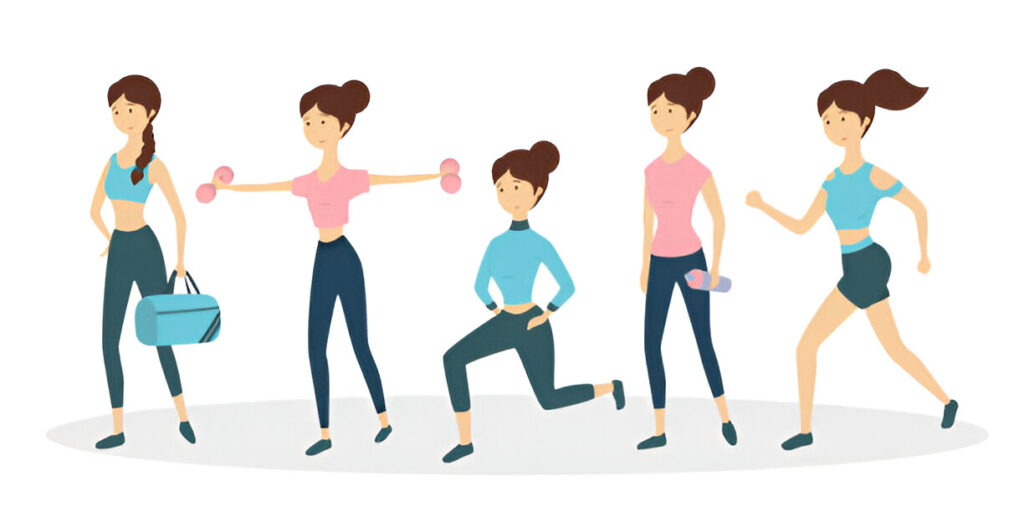Between work, family, and everything in between, finding time to exercise can feel like just another chore on a never-ending list. But skipping those workouts could mean missing out on more than just fitness goals — it’s about supporting your overall health, energy, and well-being.
While women’s vitamins help fill nutritional gaps, regular movement is what keeps your body strong, your mind clear, and your mood steady.
Interested in discovering more? This article has you covered. Read on for everything you need to know about why exercise matters, how to get started, and simple ways to make it a lasting part of your routine.
Why Does Exercise Matter for Women’s Health?
Exercise is about feeling good from the inside out. Physical activity plays a significant role in long-term health, supporting everything from heart function to mental clarity. Regular movement has been linked to a lower risk of chronic conditions like heart disease and diabetes while helping maintain a healthy weight and improve overall stamina.
Moving your body can also help manage stress levels, improve sleep quality, and even sharpen your focus. It’s like hitting the reset button for your body and mind, allowing you to show up as your best self in every area of life. Whether it’s a walk around the block or a full-blown workout, staying active is an investment in your long-term health and well-being.
Why Should Women Exercise Regularly?
So, why should women commit to regular exercise? Spoiler alert: It’s not just about shedding a few pounds. Let’s break down why sticking to a fitness routine is worth it.
Energy, Mood, and Strength Boosts
You might think working out will make you feel more tired, but the opposite is often true. Exercise helps increase energy levels by improving circulation and strengthening your heart. The more you move, the more stamina you’ll build, making daily tasks feel easier.
It also does wonders for your mood. Physical activity releases endorphins — your body’s natural mood boosters — helping you feel less stressed and more upbeat. Over time, regular exercise can even help with symptoms of restlessness and occasional feelings of stress. And let’s not forget strength: building muscle doesn’t just make you feel powerful. It supports better posture, reduces injury risk, and improves everyday movement.
Supports Hormonal and Bone Health
Exercise is critical for women’s hormonal balance, especially as they age. Activities like strength training and yoga can help regulate hormone levels, reducing symptoms tied to menstrual cycles, menopause, and other hormone-related changes.
Bone health is another big win. Try weight-bearing exercises, such as walking, running, or lifting weights. Bone loss is a common problem for women as they age. Starting early and staying consistent helps maintain bone density and reduce the risk of osteoporosis.
What Are the Best Exercises for Beginners?
You’re now on board with regular exercise after learning about all those perks — now what? Starting can feel overwhelming if you’re new to fitness (or just getting back into the swing of things). The good news? You don’t need fancy equipment or a gym membership to get moving. Here are a few beginner-friendly exercises that are easy to start and can be tailored to your comfort level:
Walking
It sounds simple, but walking is one of the most effective ways to ease into a workout routine. It improves cardiovascular health, strengthens muscles, and boosts your mood.
Begin with 10 to 15 minutes daily and gradually increase your time as it gets easier. This less intense exercise allows you to breathe and start off your body slowly but surely.
Bodyweight Exercises
Moves like squats, lunges, push-ups, and planks are perfect for beginners because they use your body’s natural resistance. These exercises help build strength and improve balance without needing equipment — just your body and some determination.
Yoga or Stretching
Yoga is great for improving flexibility, supporting mental clarity, and building muscle strength, and you don’t need to be super flexible to get started. Plus, stretching can help ease tension and improve your range of motion, making it easier to move through your day. It is also a great way to be intentional about moving your body by slowly allowing it to get used to the stretches.
Low-Impact Cardio
If running or jumping isn’t your thing, low-impact activities like cycling, swimming, or using an elliptical are great alternatives. They’re easier on the joints but help improve heart health and burn calories.
Making Exercise Stick
Starting a fitness routine is one thing, but making it a habit is where the real challenge begins. The key is to keep it simple and sustainable. Set realistic goals, find activities you enjoy, and build exercise into your schedule like any other priority.
Small, consistent efforts add up over time, and starting slow is okay. Listen to your body, celebrate the wins (big or small), and remember that movement is about feeling better, not perfection. Just keep showing up — your future self will thank you.


